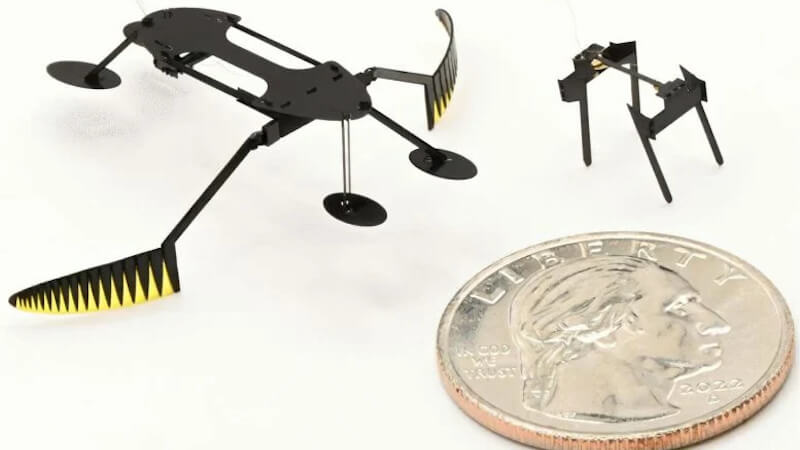
Researchers from the USA recently presented the world's two smallest, lightest and fastest microrobots. They are modeled on a beetle and a water strider.
Researchers have been developing smaller and smaller robots for some time now. These can help, for example, to find buried earthquake victims or to collect data about the environment. Researchers at Washington State University recently developed the world's smallest, lightest and fastest microrobot.
The two insect-like robots, a mini beetle and a water strider, could one day be used for work in different areas. The researchers name artificial pollination, search and rescue, environmental monitoring, micromanufacturing and robot-assisted surgery as application scenarios.
By using shape memory alloys for movement, the structures achieve even greater autonomy and efficiency. The mini beetle weighs eight milligrams, while the water strider weighs 55 milligrams. Both can move about six millimeters per second.
Microrobots: The smallest, lightest and fastest in the world
The robots are based on tiny actuators that enable movement. The researchers used a new manufacturing technique to miniaturize the actuator to less than one milligram. It is also the smallest microtobiote that scientists have ever made.
To change the shape, the actuators use a material called shape memory alloy. This alloy can be flexibly modified once heated. The name “shape memory” comes from the fact that the structure always remembers its original shape.
When the heat decreases, the mini robots return to their original shape. Unlike a classic motor that moves a robot, these alloys have no moving parts or rotating components.
In the future, robots will navigate their environment autonomously
The technology certainly seems to have potential. Compared to other systems, the approach developed by the researchers only requires a very small amount of electricity or heat to move the robots. Next, the researchers want to further study the movements of water striders.
Based on this, they want to develop a new version of the water strider-type robot that will move both on and just below the surface of the water. The team is also working on making their robots fully autonomous and independent of a power supply using tiny batteries or catalytic combustion.
Also interesting:
Source: https://www.basicthinking.de/blog/2024/03/03/mikroroboter-innovation-kaefer-wasserlaeufer/


